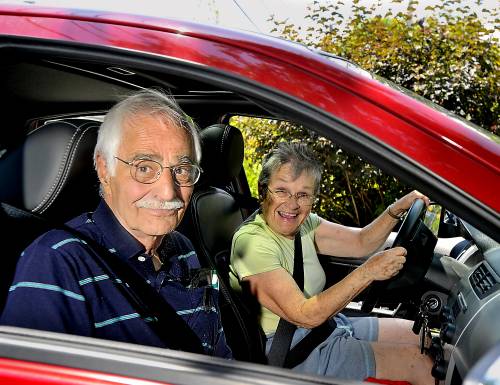Some decades ago, when the Brunswick Naval Air Station was still an active military facility, its Topsham Annex had a sign by the gate leading to Route 201 that said, “Caution! You are now entering the most dangerous area on Earth – a public highway.”
But the good news is that highway deaths have been declining. There were 32,310 fatalities on U.S. roads in 2011, a 26 percent drop since 2005 and the lowest number in 60 years.
Part of the decline is attributable to the fact that people drive less during an economic downturn. A large part is also due to the substantial advancements that have been made in the safety of the vehicles we drive. (Think about what it was like in the days before seat belts and air bags).
Still, one part of the automobile remains the same as it ever was: the driver. And renewed attention is now focusing on addressing the hazards posed by the two age groups of drivers with the highest rates of accidents: the very young and the very old.
In recent years, Maine and other states have changed their laws regarding the hours and conditions under which teenage drivers can be on the road, with no tolerance for alcohol use whatsoever. That’s important because 16- to 18-year-old drivers suffer a fatality rate of 4.5 per 1,000 crashes.
Drivers older than 65, however, have a fatality rate nearly twice as high, 8.8 per 1,000 accidents.
So the Maine Secretary of State’s office has produced a Maine Highway Safety Plan that lists older drivers among its top 14 safety concerns.
It recommends steps to encourage older drivers and their families to assess their capabilities behind the wheel and, if necessary, restrict the hours or times of day for driving when lessened capabilities are detected.
In addition, the state wants to incorporate new tests to measure cognitive impairment or dementia when older drivers renew their licenses.
And it hopes to identify alternate modes of transportation for those who cannot safely drive to routine appointments or shopping.
However, funds are short and the program is faltering without sufficient support. Efforts should be redoubled to fund these items adequately because, as several recent incidents have shown, some older drivers don’t belong on the road, for their own safety as well as that of others.
Send questions/comments to the editors.



Success. Please wait for the page to reload. If the page does not reload within 5 seconds, please refresh the page.
Enter your email and password to access comments.
Hi, to comment on stories you must . This profile is in addition to your subscription and website login.
Already have a commenting profile? .
Invalid username/password.
Please check your email to confirm and complete your registration.
Only subscribers are eligible to post comments. Please subscribe or login first for digital access. Here’s why.
Use the form below to reset your password. When you've submitted your account email, we will send an email with a reset code.